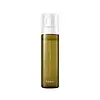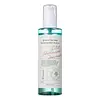What's inside
What's inside
 Key Ingredients
Key Ingredients

 Benefits
Benefits

 Concerns
Concerns

 Ingredients Side-by-side
Ingredients Side-by-side

Water
Skin ConditioningDisodium Laureth Sulfosuccinate
CleansingGlycerin
HumectantDecyl Glucoside
CleansingArtemisia Capillaris Extract
Polysorbate 80
EmulsifyingSodium Benzoate
MaskingMelaleuca Alternifolia Leaf Oil
AntioxidantMethylpropanediol
SolventLaurylpyridinium Chloride
AntimicrobialAllantoin
Skin ConditioningCitric Acid
BufferingMentha Piperita Oil
MaskingDisodium EDTA
Betaine
HumectantEthylhexylglycerin
Skin ConditioningSodium Citrate
BufferingPotassium Cocoyl Glycinate
Hedera Helix Leaf/Stem Extract
AntimicrobialRosmarinus Officinalis Leaf Extract
AntimicrobialBrassica Oleracea Italica Extract
AstringentMedicago Sativa Extract
TonicBrassica Oleracea Capitata Leaf Extract
Skin ConditioningTriticum Vulgare Germ Extract
Skin ConditioningBrassica Campestris Extract
Skin ConditioningRaphanus Sativus Seed Extract
Skin ConditioningPropolis Extract
Skin ConditioningCitrus Aurantium Amara Leaf/Twig Oil
MaskingHyaluronic Acid
HumectantCamellia Sinensis Leaf Extract
AntimicrobialMelissa Officinalis Leaf Extract
Skin ConditioningMilk Protein Extract
Glycyrrhiza Uralensis Root Extract
Skin ConditioningDiospyros Kaki Leaf Extract
Skin ProtectingMorus Alba Bark Extract
Skin ConditioningOpuntia Coccinellifera Fruit Extract
Skin ConditioningJasminum Officinale Flower/Leaf Extract
MaskingLavandula Angustifolia Flower/Leaf/Stem Extract
MaskingHamamelis Virginiana Bark/Leaf/Twig Extract
Skin ConditioningEucalyptus Globulus Leaf Extract
PerfumingCalendula Officinalis Flower Extract
MaskingMentha Piperita Leaf Extract
Skin ConditioningVerbena Officinalis Leaf Extract
MaskingChamomilla Recutita Flower Extract
MaskingAspalathus Linearis Extract
Skin ConditioningCentella Asiatica Extract
CleansingChamaecyparis Obtusa Leaf Extract
Skin ConditioningPinus Densiflora Leaf Extract
AntimicrobialPinus Sylvestris Bud Extract
PerfumingCarica Papaya Fruit Extract
Skin ConditioningPanthenol
Skin ConditioningWater, Disodium Laureth Sulfosuccinate, Glycerin, Decyl Glucoside, Artemisia Capillaris Extract, Polysorbate 80, Sodium Benzoate, Melaleuca Alternifolia Leaf Oil, Methylpropanediol, Laurylpyridinium Chloride, Allantoin, Citric Acid, Mentha Piperita Oil, Disodium EDTA, Betaine, Ethylhexylglycerin, Sodium Citrate, Potassium Cocoyl Glycinate, Hedera Helix Leaf/Stem Extract, Rosmarinus Officinalis Leaf Extract, Brassica Oleracea Italica Extract, Medicago Sativa Extract, Brassica Oleracea Capitata Leaf Extract, Triticum Vulgare Germ Extract, Brassica Campestris Extract, Raphanus Sativus Seed Extract, Propolis Extract, Citrus Aurantium Amara Leaf/Twig Oil, Hyaluronic Acid, Camellia Sinensis Leaf Extract, Melissa Officinalis Leaf Extract, Milk Protein Extract, Glycyrrhiza Uralensis Root Extract, Diospyros Kaki Leaf Extract, Morus Alba Bark Extract, Opuntia Coccinellifera Fruit Extract, Jasminum Officinale Flower/Leaf Extract, Lavandula Angustifolia Flower/Leaf/Stem Extract, Hamamelis Virginiana Bark/Leaf/Twig Extract, Eucalyptus Globulus Leaf Extract, Calendula Officinalis Flower Extract, Mentha Piperita Leaf Extract, Verbena Officinalis Leaf Extract, Chamomilla Recutita Flower Extract, Aspalathus Linearis Extract, Centella Asiatica Extract, Chamaecyparis Obtusa Leaf Extract, Pinus Densiflora Leaf Extract, Pinus Sylvestris Bud Extract, Carica Papaya Fruit Extract, Panthenol
Water
Skin ConditioningDecyl Glucoside
CleansingSodium Cocoyl Glutamate
CleansingChenopodium Quinoa Seed Extract
Skin ConditioningGlycerin
HumectantSodium Lauroyl Glutamate
Betaine
HumectantGlycine Soja Oil
EmollientMelaleuca Alternifolia Leaf Extract
PerfumingChlorphenesin
AntimicrobialHydroxyacetophenone
AntioxidantEthylhexylglycerin
Skin ConditioningCamellia Sinensis Leaf Extract
AntimicrobialHumulus Lupulus Extract
AntimicrobialOcimum Tenuiflorum Extract
Skin ConditioningCentella Asiatica Extract
CleansingCalendula Officinalis Flower Extract
MaskingPrunus Amygdalus Dulcis Fruit Extract
Skin ConditioningCitric Acid
BufferingGeranium Maculatum Oil
MaskingAllantoin
Skin ConditioningWater, Decyl Glucoside, Sodium Cocoyl Glutamate, Chenopodium Quinoa Seed Extract, Glycerin, Sodium Lauroyl Glutamate, Betaine, Glycine Soja Oil, Melaleuca Alternifolia Leaf Extract, Chlorphenesin, Hydroxyacetophenone, Ethylhexylglycerin, Camellia Sinensis Leaf Extract, Humulus Lupulus Extract, Ocimum Tenuiflorum Extract, Centella Asiatica Extract, Calendula Officinalis Flower Extract, Prunus Amygdalus Dulcis Fruit Extract, Citric Acid, Geranium Maculatum Oil, Allantoin
 Reviews
Reviews

Ingredients Explained
These ingredients are found in both products.
Ingredients higher up in an ingredient list are typically present in a larger amount.
Allantoin is a soothing ingredient known for its protective and moisturizingg properties. Because of this, it is often added to products with strong active ingredients.
Studies show higher concentrations of this ingredient can promote wound healing.
Though it can be derived from the comfrey plant, allantoin is produced synthetically for cosmetic products to ensure purity.
Learn more about AllantoinBetaine is a common humectant (a substance that promotes retention of moisture). It's known to be gentle on the skin and can help balance hydration.
This ingredient is best for improving hydration and soothing irritated skin. Studies also show it helps even out skin tone.
Fun fact: Betaine is naturally created in the skin and body. The kind found within cosmetic products can be either plant-derived or synthetic.
Another name for betaine is trimethylglycine.
Learn more about BetaineCalendula Officinalis Flower Extract comes from the common Marigold plant. This ingredient is a skin conditioner.
Marigolds contain flavonoids. Flavonoids are a group of substances found naturally in plants. They possess antioxidant and inflammation properties.
This ingredient soothes skin inflammation by inhibiting inhibiting a part of the inflammation process.
Marigolds have been used in traditional medicine throughout Asia and Europe.
Learn more about Calendula Officinalis Flower ExtractCamellia Sinensis Leaf Extract is derived from the leaves of the tea plant. Black tea, green tea, and oolong tea are all harvested from this plant.
This ingredient has many skin benefits:
This ingredient contains polyphenols, a strong antioxidant. Antioxidants help fight off molecules that damage skin cells.
On top of that, the antioxidants in green tea neutralize free-radicals from the sun. This gives the skin some extra UV protection, but should not replace sunscreen.
Many components of tea have anti-inflammatory properties.
Polyphenols and L-theanine help soothe the skin and reduce irritation. The caffeine in Camellia Sinensis Leaf Extract helps calm inflamed blood vessels.
Other compounds found in tea include: Vitamin Bs, linoleic acid, magnesium, calcium, iron, and zinc.
Research has shown both drinking Camellia Sinensis Leaf Tea and applying it to the skin can help boost skin elasticity and hydration. Studies also show using tea extract may reduce sebum, or oil, production.
Learn more about Camellia Sinensis Leaf ExtractCentella Asiatica Extract (Centella) is derived from an herb native to Southeast Asia. It is famous for its anti-inflammatory and soothing properties.
Centella is rich in antioxidants and amino acids, such as Madecassic Acid and Asiaticoside.
Studies show the compounds in centella help with:
The combination of all these properties makes centella effective at soothing, hydrating, and protecting the skin.
Other great components of centella include Vitamin A, vitamin C, several B vitamins, and Asiatic Acid.
Fun fact: Centella has been used as a medicine and in food for many centuries. As a medicine, it is used to treat burns, scratches, and wounds.
Learn more about Centella Asiatica ExtractCitric Acid is an alpha hydroxy acid (AHA) naturally found in citrus fruits like oranges, lemons, and limes.
Like other AHAs, citric acid can exfoliate skin by breaking down the bonds that hold dead skin cells together. This helps reveal smoother and brighter skin underneath.
However, this exfoliating effect only happens at high concentrations (20%) which can be hard to find in cosmetic products.
Due to this, citric acid is usually included in small amounts as a pH adjuster. This helps keep products slightly more acidic and compatible with skin's natural pH.
In skincare formulas, citric acid can:
While it can provide some skin benefits, research shows lactic acid and glycolic acid are generally more effective and less irritating exfoliants.
Most citric acid used in skincare today is made by fermenting sugars (usually from molasses). This synthetic version is identical to the natural citrus form but easier to stabilize and use in formulations.
Read more about some other popular AHA's here:
Learn more about Citric AcidDecyl Glucoside is a glucose-based surfactant and emulsion stabilizer. It is created by reacting glucose with the fatty acids from plants.
Surfactants help clean the skin by trapping oil, sebum, and dirt to be washed away. As an emulsion stabilizer, it stabilizes the ingredients in a product by preventing them from separating.
This ingredient is biodegradable and non-toxic. This ingredient is commonly found in baby shampoos.
Decyl Glucoside is sometimes used to stabilize the UV filter Tinosorb.
Learn more about Decyl GlucosideEthylhexylglycerin (we can't pronounce this either) is commonly used as a preservative and skin softener. It is derived from glyceryl.
You might see Ethylhexylglycerin often paired with other preservatives such as phenoxyethanol. Ethylhexylglycerin has been found to increase the effectiveness of these other preservatives.
Glycerin is already naturally found in your skin. It helps moisturize and protect your skin.
A study from 2016 found glycerin to be more effective as a humectant than AHAs and hyaluronic acid.
As a humectant, it helps the skin stay hydrated by pulling moisture to your skin. The low molecular weight of glycerin allows it to pull moisture into the deeper layers of your skin.
Hydrated skin improves your skin barrier; Your skin barrier helps protect against irritants and bacteria.
Glycerin has also been found to have antimicrobial and antiviral properties. Due to these properties, glycerin is often used in wound and burn treatments.
In cosmetics, glycerin is usually derived from plants such as soybean or palm. However, it can also be sourced from animals, such as tallow or animal fat.
This ingredient is organic, colorless, odorless, and non-toxic.
Glycerin is the name for this ingredient in American English. British English uses Glycerol/Glycerine.
Learn more about GlycerinWater. It's the most common cosmetic ingredient of all. You'll usually see it at the top of ingredient lists, meaning that it makes up the largest part of the product.
So why is it so popular? Water most often acts as a solvent - this means that it helps dissolve other ingredients into the formulation.
You'll also recognize water as that liquid we all need to stay alive. If you see this, drink a glass of water. Stay hydrated!
Learn more about Water